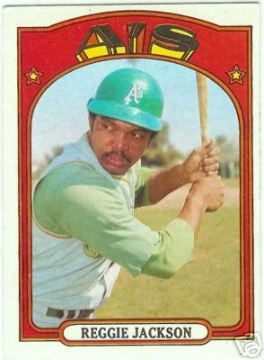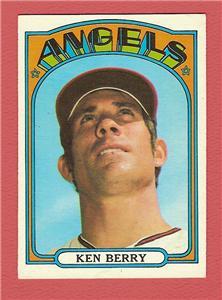This year for Christmas, my secret Santa (my step-sister’s husband) got me a 1996 World Series baseball autographed by Joe Torre. How cool is that? I don’t care much about autographs but this one I like. It’s the perfect gift to get from a secret Santa. Thoughtful.
One of the things I’m most excited about 2008 is the release of The Best Sports Writing of Pat Jordan, a book I edited, with help from Gabe Fried at Persea books and Pat himself. As I’ve mentioned on the Banter previously, Jordan played with Torre in the Braves’ minor league system in the early ’60s.
In 1996, Pat did a piece on Joe Torre for the New York Times magazine in the middle of the summer as the team was surging then slumping. It wasn’t a long profile or a particularly memorable one. By Jordan’s own admission, it is a minor piece. The story did not make the cut for our collection; in fact, it didn’t make the B-list. However, I have a couple of drafts of the story, one called “The Patience of Joe,” and another one, completely restructured, called “They Shoot Horses, Don’t They?” that have some good stuff in ’em.
Here is the begining and end of Pat’s working draft of “They Shoot Horses, Don’t They?”
Joe Torre, the New York Yankees’ manager, is sitting behind his desk in his office off the clubhouse in Yankee Stadium, talking to Rick Cerrone, the team’s director of media relations, while making out today’s line-up card.
Torre is a big, dark, sinister-looking man of 55. He has the blocky build of a professional wrestler, The Villain, recently gone on a diet. He has dark, olive-colored skin, black stubble of beard, and bushy black eyebrows that hand low over his threatening, black eyes. He does look villainous…a Mexican bandito about to pillage a town of peasants…a vengeful Saracan warrior about to sack the camp of a hated enemy.
A sportswriter barges in, unannounced. He starts haranguing Cerrone over his late-arriving press credentials which caused him to be an hour late for his interview with Torre. The sportswriter’s face is flushed with anger. Torre’s threatening eyes shift up, only the whites showing. Torre stands, a dark, threatening presence. He raises his hands, palms out, as if to fend off heat.
“Calm down,” he says, almost pleading. “Calm down. I’ll give you all the time you need. Have some coffee. Someone get him some coffee. Please!”
When Torre was a pudgy, 20-year-old catcher in the Milwaukee Braves’ minor league farm system in 1960, he looked every bit as old and dark and threatening as he does now. He always looked like an old man playing a young man’s game. At 20, Torre would waddle out to the pitcher’s mound in his catching gear to confront his baby-faced pitcher, red-faced, furious, kicking the dirt, making a spectacle of himself, embarrassing himself and his teammates because of their latest error. (Torre never embarrasses his players, he says, because, “I hit .360 one year, and .240 another, and I know I tired just as hard both years.” When Yankees’ rookie shortstop, Derek Jeter, made a crucial error that lost a game in August, Torre said, “He’s played his tail off for us and has won a lot of games. More than the error, that’s what to keep in mind.” Which is why, Wade Boggs, the Yanks’ veteran third baseman calls Torre, “A player’s manager.”)
Even at 20, Torre knew not to embarrass his teammates, and when he saw his young pitcher doing it, thrashing around the mound, he would stop ten feet from his raging pitcher, raises his hands, palms out, and say, in the same, pleading voice he uses today, “Calm down. Relax. We’ll get ’em for you. Don’t worry.”
After Torre has calmed the sportswriter, he says, “I have a temper, I just don’t vent it. (He also has stomach troubles.) Maybe it’s more healthy to show emotion. I don’t know. I’m a patient person.”
Torre always played the game with the patience of an older man. Even at 20, he had what was called “a professional attitude.” Which meant he approached the game unemotionally, diligently, doggedly, the only way possible if a player is to fashion a long career over 100-plus games a year. Each season, each game, each inning even, can be a lifetime of emotional highs and lows. Young players, furious pitchers, caught up in those emotional high and lows don’t last long in the game. Torre lasted 17 years. He finished his playing career with a lifetime .297 batting average and is the only player to be voted the National League’s Most Valuable Player, in 1971, when he led the league in both batting, .363 and runs batted in, 137, and the National League’s Manager of the Year, in 1982, when he led the Atlanta Braves to a division title. This is Torre’s 15th season as a manager (New York Mets, Atlanta, St. Louis Cardinals) and his first with the Yankees, who are leading the American League East with the third best record in baseball, and are considered one of three teams with the best chance at winning the World Series, the last of which the Yankees won in 1978.
Torre has blended a team of youthful players and grizzled veterans, born again Christians and recovering substance abusers, into arguably one of the most well-balanced teams in baseball. The present-day Yankees play an unremarkably adept game Torre calls “a National League game. We grind it out, one run at a time.” The Yankees pick away at their opponents, a single, a stolen base, a sacrifice bunt, a sacrifice fly ball, and a run, in a way that makes every player feel he’s contributing to their success.




